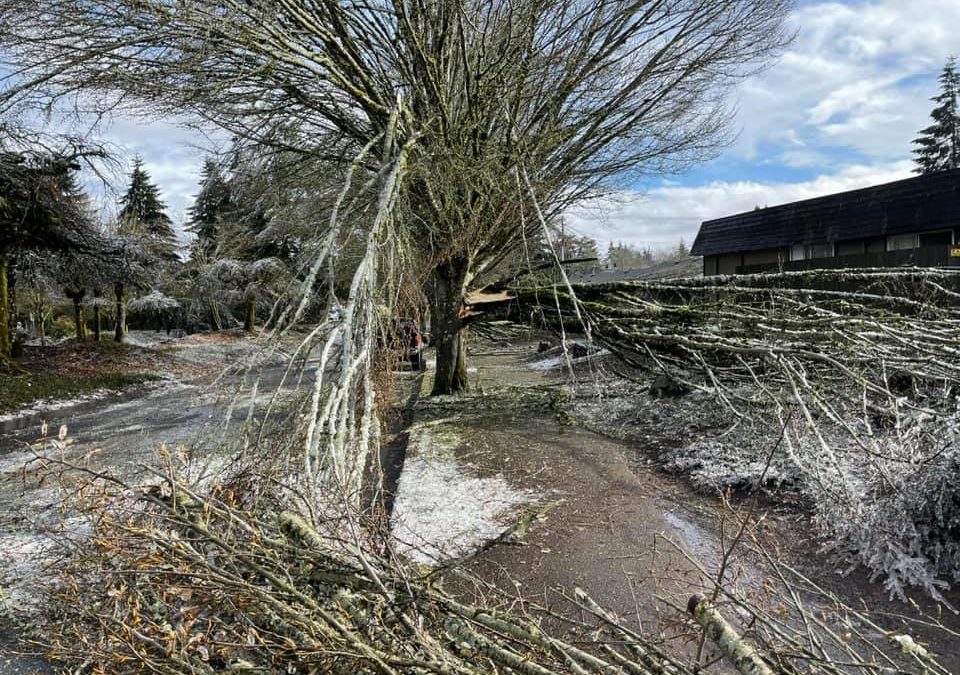As power and internet are being restored to homes, we can take a hot shower, cook food and
stream our favorite shows. Now we can look outside and turn our attention to the trees we
loved.
If you’re like most of us, you’ve done what was urgently needed; moved branches blocking the
driveway and took down that one fragile branch that might unexpectedly fall. There are likely
many injured trees that remain on your property. Here are some ways to help preserve them.
Let’s get sciency!
What’s a tree wound?
Broken branches, improper pruning, insects, fire, scrapes, animal
damage leaving exposed areas on the tree.
How does a tree recover from its wounds?
Unlike your skin, a tree doesn’t replace damaged tissues. There are two ways trees heal, one is producing a “reaction zone.” This changes the chemistry of the wood around the wound and protects it from organisms that would decay the wood. The tree places “callus” tissues around the wound, protecting it from outside forces (insects, etc.) Then it creates a “barrier zone” by protecting the wound by creating chemical and physical barriers around the injured cells.
How can I help the healing process?
It’s always good to get a professional’s help if you want to make sure to save the tree. Until that
is possible, you can do the following:
- Cut off jagged bark edges (don’t remove healthy bark!)
- You can use a tree wrap to protect the tree while it heals
- Don’t try to put any paint or chemicals on the wound
- Keep the area around the tree healthy with proper watering (when it’s dry!) and fertilization
Can this tree be saved?
If more than two-thirds of a trunk’s bark (at the same height) has been damaged, it’s likely the
tree is on life support. You will need to contact a tree specialist if saving the tree is your goal.

